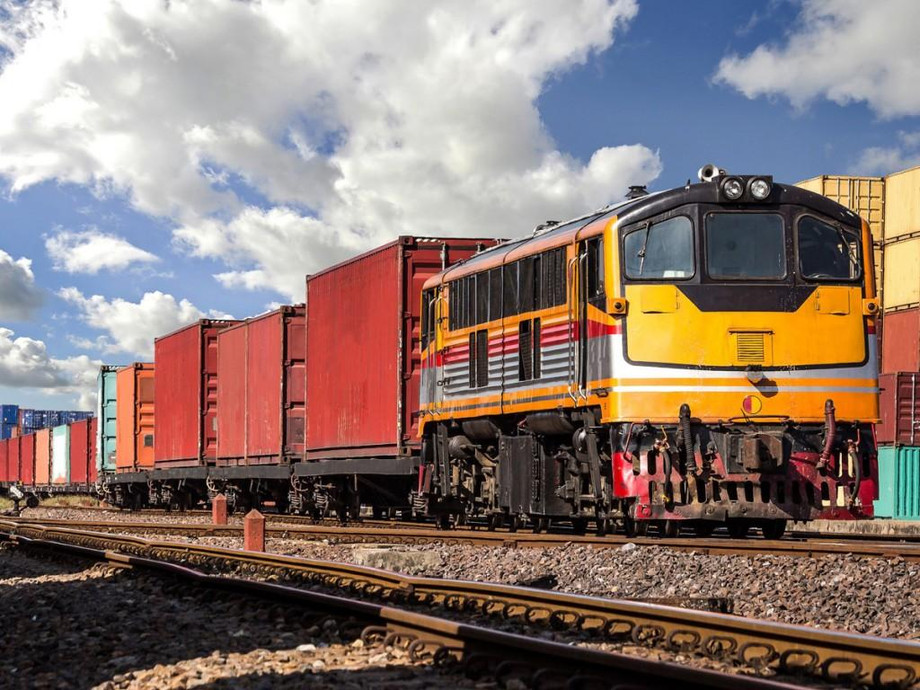Introduction
In the fast-paced world of logistics and cargo transportation, efficiency is key. The global economy relies on the swift and reliable movement of goods, and finding innovative ways to transport cargo is essential. One method that has been gaining traction in recent years is rail container transport. This mode of transportation offers a host of benefits that are not only cost-effective but also environmentally friendly. In this blog, we will explore the world of rail container transport and how it is revolutionizing the way we move goods.

The Basics of Rail Container Transport
Rail container transport, also known as intermodal or containerized rail transport, involves the use of standardized containers loaded with goods that can be easily transferred between different modes of transportation, such as ships, trains, and trucks. These containers are designed to fit seamlessly onto specialized railcars, making the entire process efficient and streamlined.
Advantages of Rail Container Transport
- Cost-Effective: Rail container transport is often more cost-effective than traditional over-the-road trucking. Trains can carry larger volumes of cargo at once, reducing transportation costs per unit.
- Environmental Benefits: With growing concerns about climate change and emissions, rail transport is an eco-friendly alternative. Trains are more fuel-efficient and produce fewer emissions per ton-mile of cargo moved compared to trucks.
- Reduced Congestion: Rail transport helps alleviate road congestion, as it reduces the number of trucks on highways. This not only benefits the environment but also leads to less wear and tear on road infrastructure.
- Reliability: Trains are known for their reliability. They operate on fixed schedules and are less susceptible to weather-related delays compared to trucks, which can be affected by road closures due to adverse weather conditions.
- Safety: Rail container transport has a strong safety record. The use of standardized containers and well-maintained rail systems minimizes the risk of accidents and cargo damage.
- Long-Distance Hauls: Rail transport is particularly advantageous for long-distance hauls, where the cost savings and environmental benefits become even more significant.
Applications of Rail Container Transport
- International Trade: Rail container transport plays a crucial role in international trade, connecting ports to inland destinations. It facilitates the movement of goods between countries, contributing to global economic growth.
- Supply Chain Resilience: The COVID-19 pandemic highlighted the importance of resilient supply chains. Rail transport provides an alternative mode of transportation when other modes face disruptions.
- Bulk Cargo: Rail container transport is well-suited for transporting bulk cargo such as grain, coal, and minerals. These commodities can be efficiently loaded into containers and transported over long distances.
- Retail Distribution: Retailers often use rail container transport to move goods from distribution centers to stores. The reliability and cost savings make it an attractive option for maintaining product supply.
Challenges and Future Trends
While rail container transport offers numerous advantages, it also faces challenges such as infrastructure maintenance, competition from other modes of transportation, and regulatory issues. However, ongoing investments in rail infrastructure and technological advancements are helping to address these challenges.
Looking ahead, the future of rail container transport is promising. Automation, electrification, and digitalization are expected to enhance efficiency and reduce environmental impacts. As the world seeks sustainable transportation solutions, rail container transport is well-positioned to play a pivotal role.
Conclusion
Rail container transport is not just a mode of cargo transportation; it’s a vital component of the global supply chain. Its cost-effectiveness, environmental benefits, and reliability make it a compelling choice for businesses and industries worldwide. As we continue to prioritize sustainability and efficiency, rail container transport will undoubtedly remain a key player in the evolving landscape of logistics and cargo transportation. Embracing this mode of transport is not just a choice; it’s a step towards a more sustainable and connected future.